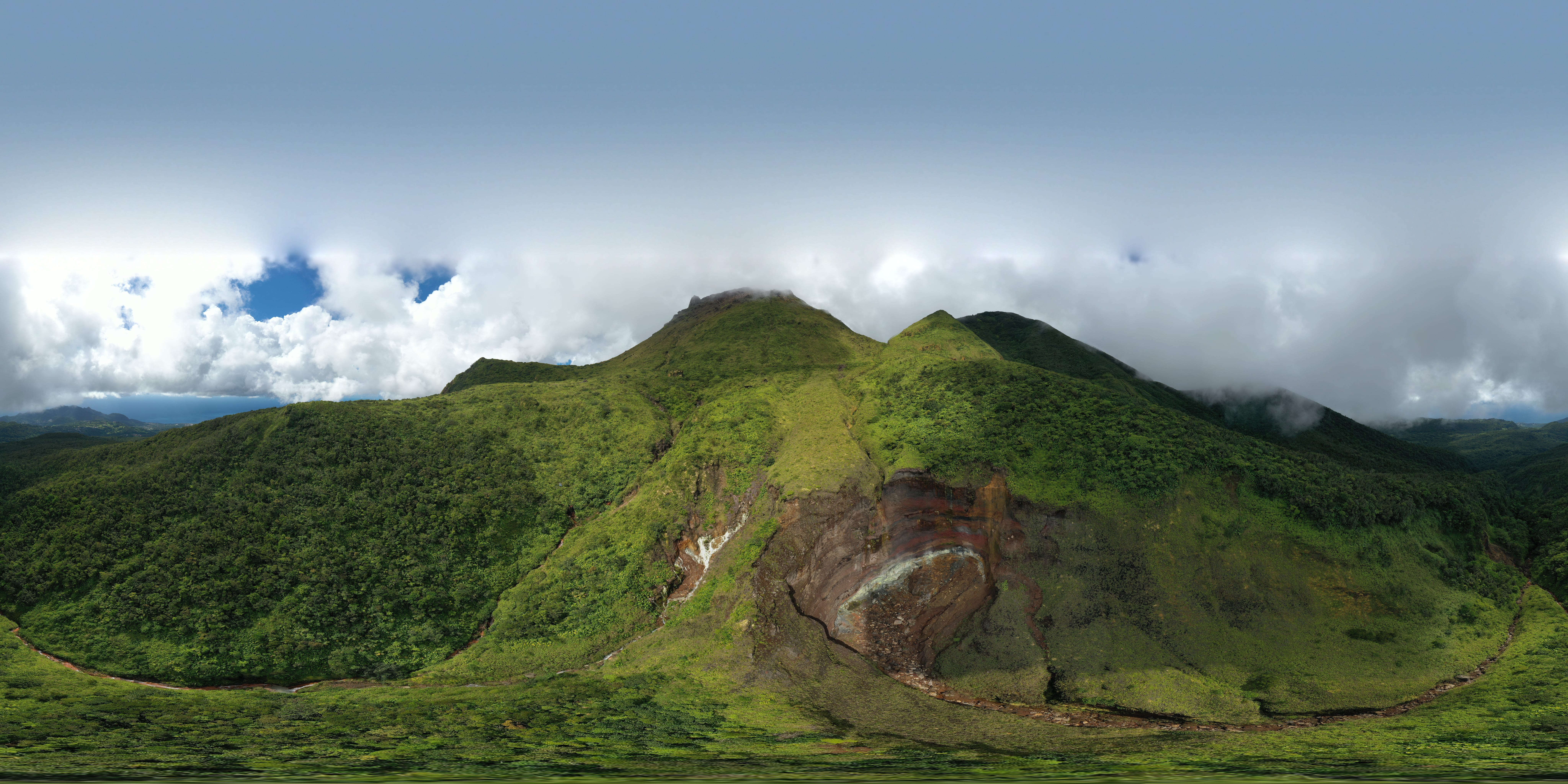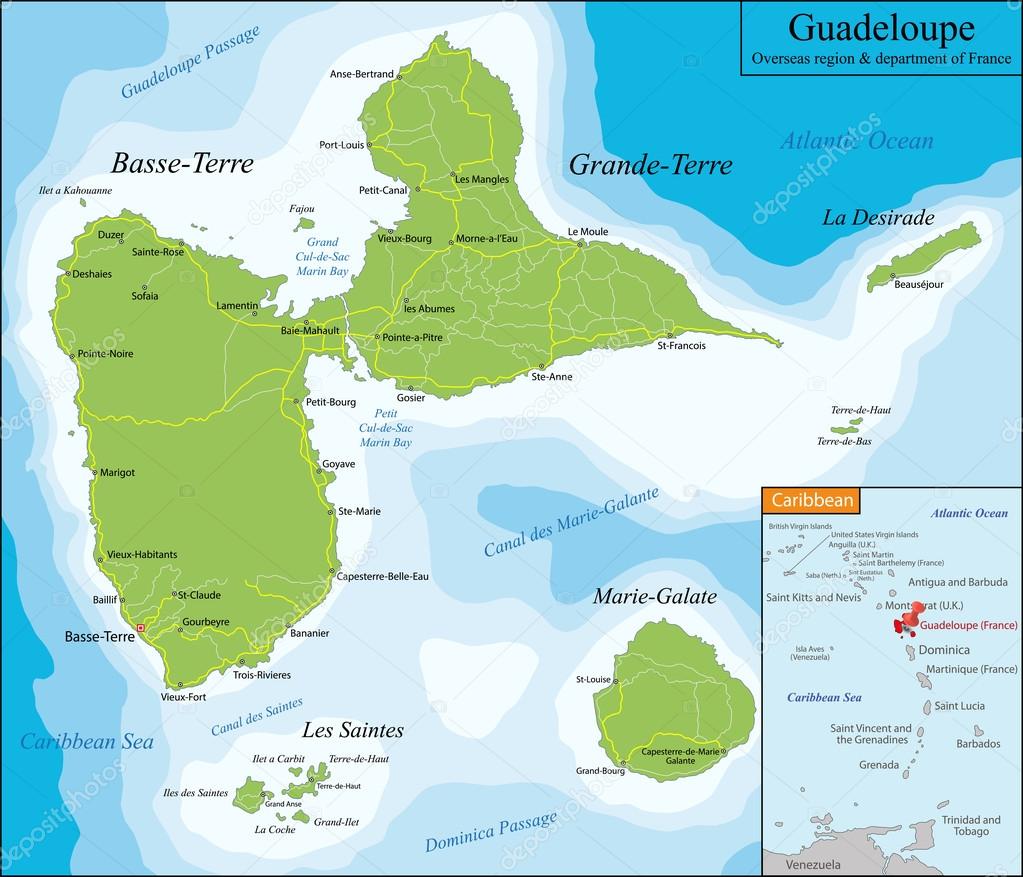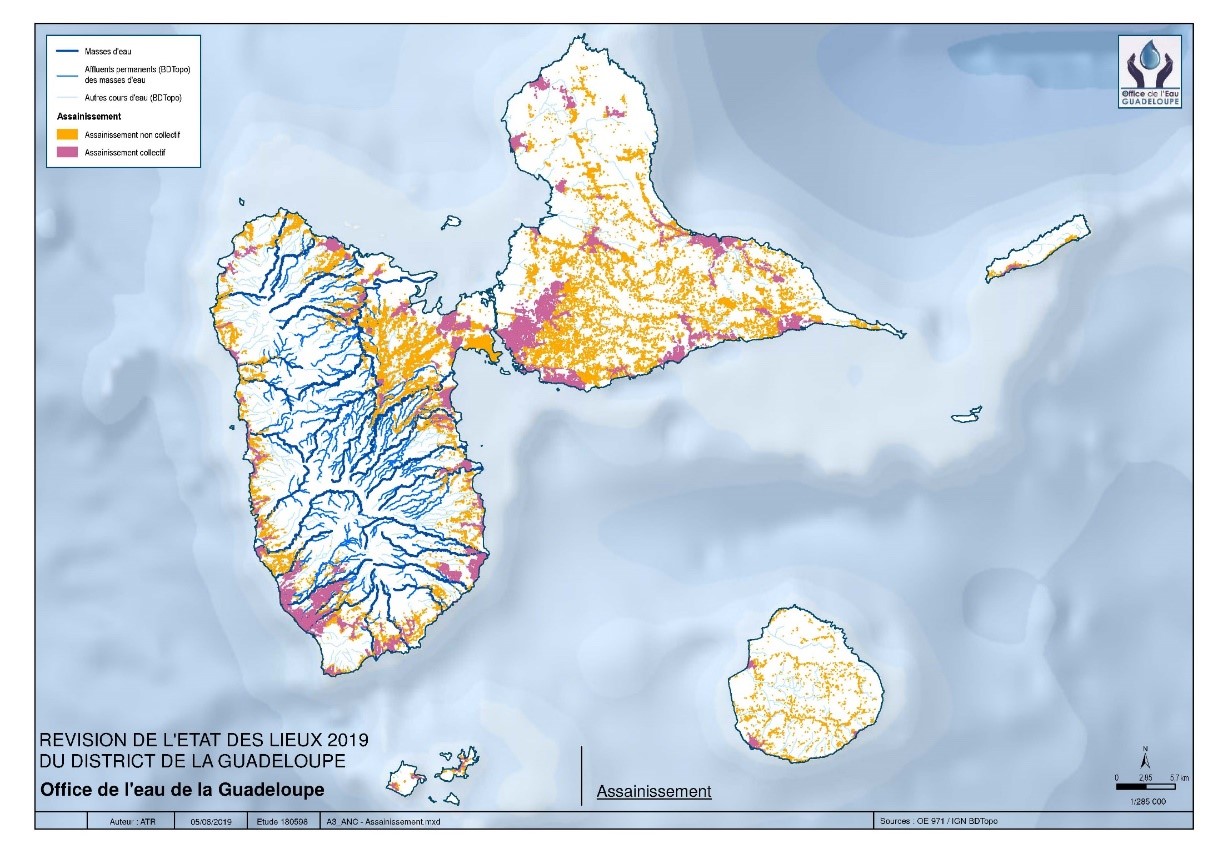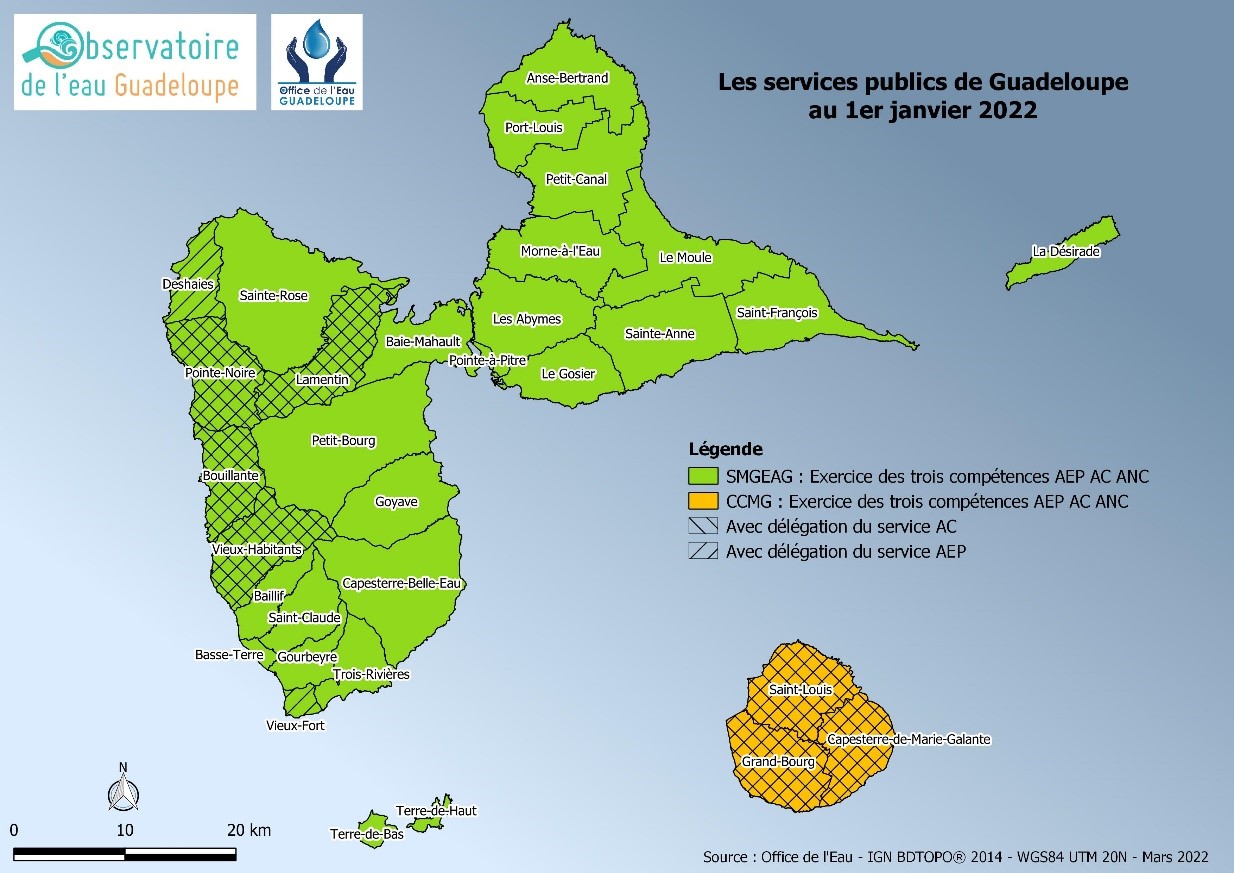Guadeloupe is a French archipelago of 1,628km2 with 384,239 inhabitants in its five island groups (2019 census). Its population density is 236 inhabitants/km2. On the Basse Terre, the coastline and the plains are highly anthropised. On the Grande Terre, apart from the highly urbanised towns of Pointe à Pitre and Les Abymes, the population is concentrated in the rugged Grands Fonds area and on the southern coastline.
Guadeloupe is an archipelago with a temperate maritime tropical climate characterised by a great diversity of landscapes, vegetation and soils, but also by a significant rainfall temporal and spatial variability.
Drinking water and sanitation
Given the natural context, the drinking water supply for the population of the Basse Terre is mainly ensured by surface water withdrawals, supplemented by groundwater withdrawals to meet needs. The drinking water supply for the population of the Grande-Terre is mainly provided by groundwater abstraction.
The domestic wastewater collection networks in Guadeloupe are ageing and are now the cause of permanent or occasional influxes of parasitic clear water that destabilise the operation of the treatment plants. Their performance suffers and affects coastal water bodies (eutrophication).
Regarding access to water and sanitation services in Guadeloupe, on Basse Terre, only the town centres are connected to collective sanitation. The outlying districts are not.
On Grande Terre, non-collective sanitation predominates due to the dispersion of the habitat.
More generally, 44% of the Guadeloupean population benefits from collective sanitation services and 56% from non-collective sanitation, i.e. not connected to a treatment plant, of which only 15% comply with the standards.
The partner of the CARIBSAN project in Guadeloupe is the Water Office (ODE) of Guadeloupe.





